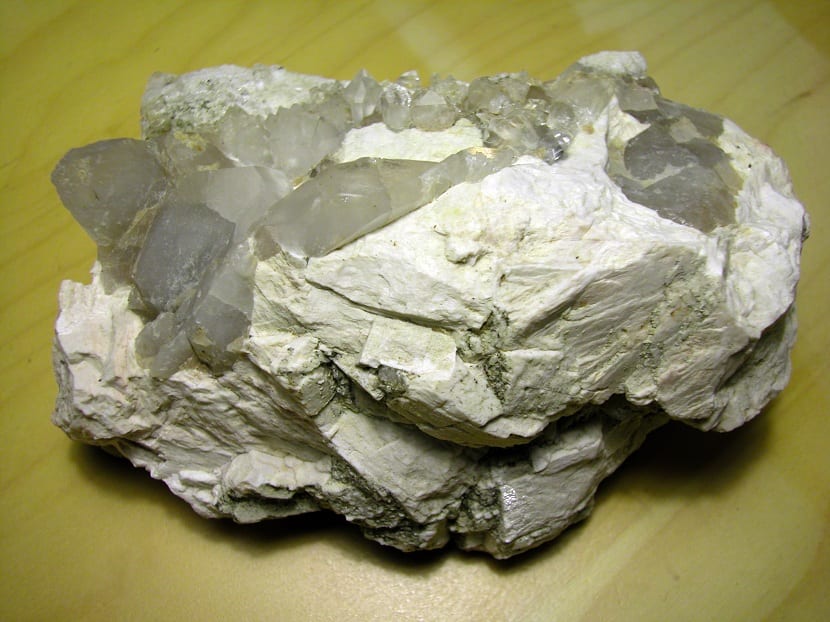
Between the rock types that exist in the world, there is one that is very characteristic and frequent in many parts of the planet. It's about the pegmatite. It is characteristic for its large grains, exceeding 20 mm. Typically the grain size is much smaller in rocks. It is a type of volcanic igneous rock that originates from the rapid cooling and solidification of magma.
In this article we will explain what the characteristics of this rock are, what uses it has and much more.
Key features
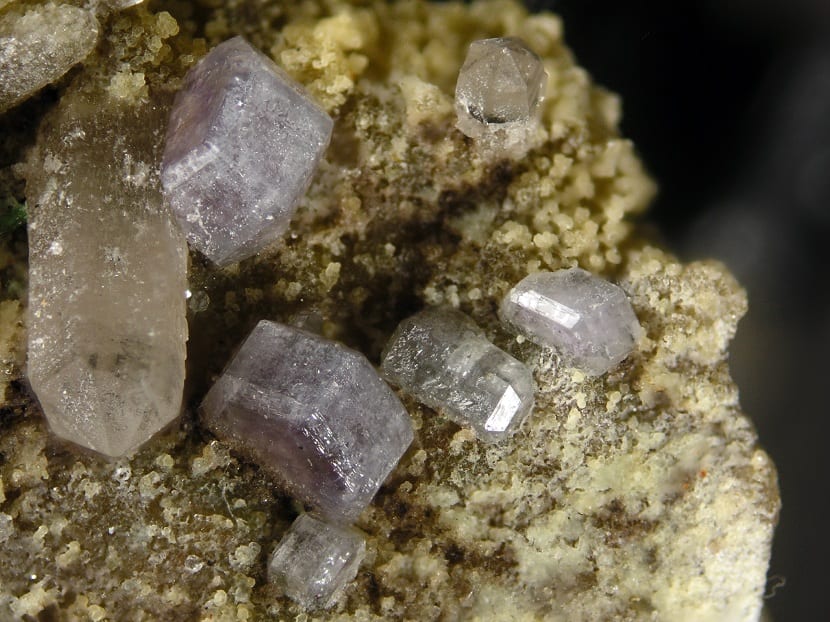
This rock occurs within the veins at intermediate depths when the magma present is solidified by rapid cooling. It is mostly composed of equal parts of quartz, orthoclase feldspar and others minerals accessories such as Muscovite. In almost any rock we can find different minerals from different sources. Here, we can find oxide and silicate minerals that are not very common. These are called columbite and coltan.
Among the pegmatite, some of the most demanded minerals in shops around the world can be extracted. They are the so-called precious stones like topaz, tourmaline and aquamarine. These minerals are in high demand due to the belief that they have about their spiritual powers. It is thought that by wearing certain necklaces or bracelets with these minerals, the chakras will be healthier, and they fulfill their function better.
The color of the pegmatite is clear, between white and pink. There are also some variety of gray and cream colors. It has large crystals and penetration twins. When rock structures are analyzed, each one has something different. However, when we refer to pegmatite, we realize that the structure is unique. This type of structure has been given the name of pegmatite structure.
As with other Philolian-type rocks, their crystals are not usually uniform. This is due to the rapid cooling of the magma in the veins. In addition, rock formation occurs in different phases and temperatures and, depending on their duration, it will have one form or another. The crystals do not have time to form well, so they have a very uneven structure.
This rock gives rise to dikes, pockets and veins inside the volcano. It is frequently associated with granite.
Types of pegmatite
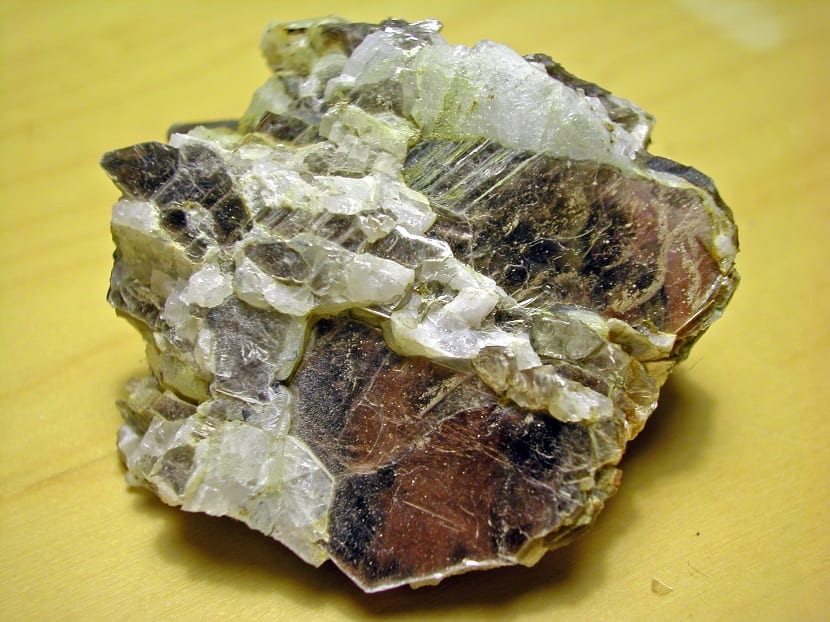
There are several types of pegmatite depending on the predominant elements and minerals in it. First of all, we meet granite pegmatite. From its name we can easily know that it has the same minerals as granite. This is one of the reasons why it is often related to him.
On the other hand, we have another type of pegmatite known as syenitic. In this type of rock we find alkaline elements that have been produced at different temperatures. Finally, we have the gabbroid pegmatite. This name refers to the fact that the elements of which it is composed are similar to those of the gabbro. All these rocks are related to each other by having almost the same origin and formation conditions.
Although the chemical composition varies among others, it can be classified according to the main groups of simple pegmatites and those that are compound. In the first we find a matrix of microcline and quartz that borders the nucleus that is also made of quartz. It does not usually have mineral zones. On the other hand, we have in the composites, that the core is surrounded by intermediate zones between the wall and the edge.
The most expensive and economically interesting rocks are those that have thin layers covered with mineral variations. Among these minerals we find feldspars, albite, muscovite and quartz.
Another type of pegmatites that respond to their morphology are those that depend on the temperature and pressure at which they have been formed. In these classifications we find abyssal-type pegmatites, micaceous and those with rare elements. The myorolytics have been added to this list are obtained at temperatures above 400 degrees, but with different pressure measurements.
Origin of pegmatites
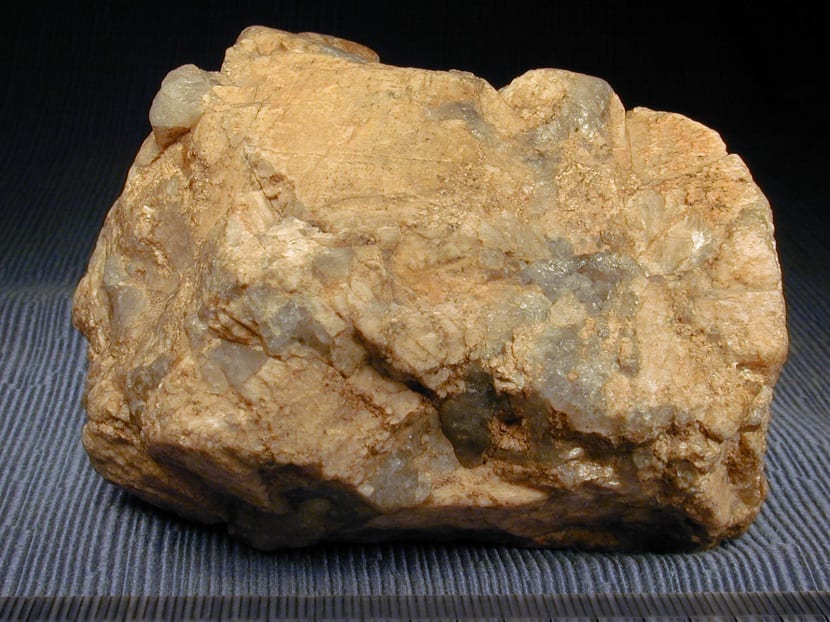
Myarolytic pegmatites are those that are formed through the metamorphism of allochthonous granites. They are those that contain elements of the group of lanthanides, sodium and thorium. The abyssal pegmatite is the one that originates when a partial fusion takes place and includes earth from different origins in its elements. The more elements and rare earth compounds you have, the more economic value you add to the rock.
Almost all pegmatite rocks are formed from a magmatic fluid that has a large amount of quartz and feldspar. To form, they need other components such as water, fluorine, boron and other igneous rocks intervene that serve to fill in the cracks left by the rock.
All these components are what make up the volatiles that allow them to crystallize into rocks of surprising dimensions. There is also another way to originate and it is through metamorphic rocks that have been exposed to high pressure. When this happens, the quartz and feldspars that are present in the rock consolidate until they merge. When this happens, they recrystallize to give rise to pegmatite.
Most frequent uses
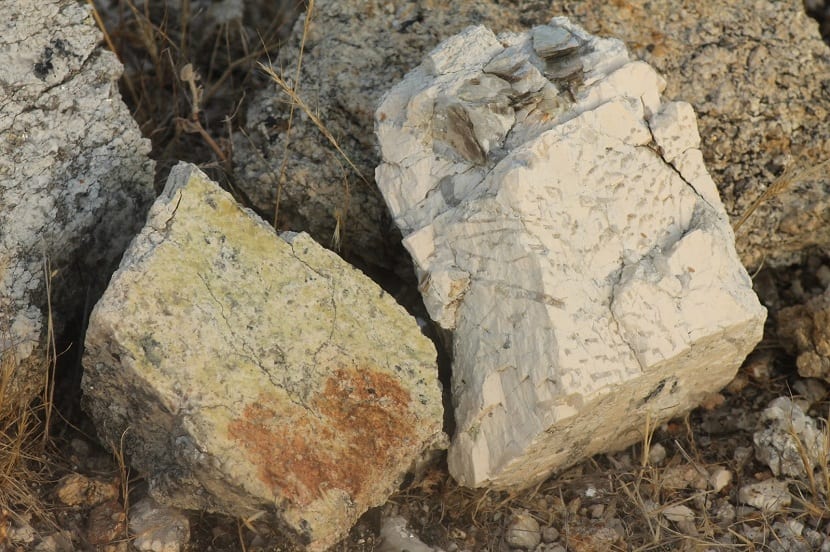
As a raw rock with little modification, pegmatite is rarely used much. It is usually marketed, at least, as granite to fill some surfaces. It also serves as raw material for the production of glass and ceramics. In the field of construction it can have a lot of room.
Thanks to the pegmatite, the mica that is used in different electronic equipment and optical filters can be extracted. Of the gemstones mentioned above, specimens of zirconia, emerald, garnet, aquamarine and apatite, among other precious stones, can also be extracted.
As you can see, pegmatite is a very interesting rock that, although it does not have many commercial uses, it can provide numerous minerals and precious stones with great economic interest. I hope that with this article you can learn more about this rock.